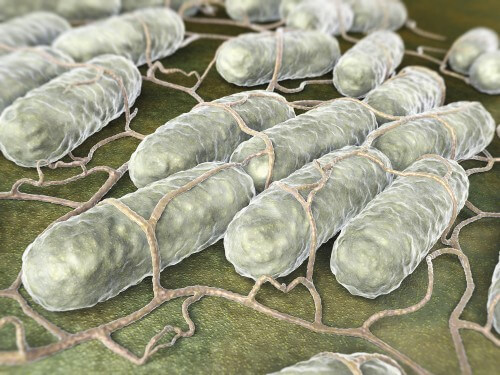Researchers led by Dr. Erez Mills, an Israeli researcher who is doing his postdoctoral internship, in the laboratory of Professor Samuel Miller, at the University of Washington in Seattle, examined an intracellular mechanism that is common in many bacteria and helps the bacteria gather information about the environment and decide whether to move or settle where it is.

By Dr. Michal Arad
New research into the Salmonella bacterium is a breakthrough in overcoming Salmonella and other bacteria. The salmonella bacterium can cause severe food poisoning in humans and animals. According to the American Center for Disease Control and Prevention, the Salmonella bacterium is responsible for 1.2 million sick cases per year in the United States alone, and in Israel, although there is no exact information, it is estimated that there are about XNUMX new cases per year (National Salmonella Reference Center).
In order to survive in a changing environment bacteria, like other living things, need to detect changes in their environment. Bacteria recognize, for example, high concentrations of antibiotics, and change their outer membrane to survive in the antibiotic environment. The ability to detect changes in the environment allows bacteria to survive in conditions of food shortage, and thus reproduce and harm us through our food.
In an article published in the science signaling newspaper on June XNUMX, the researchers examined which environmental messages the bacterium Salmonella (Salmonella typhimurium) detects. In order to improve our understanding and optimize the defense against salmonella, researchers led by Dr. Erez Mills, an Israeli researcher doing a postdoctoral internship, in the laboratory of Professor Samuel Miller, at the University of Washington in Seattle, took advantage of an intracellular mechanism common in many bacteria - cyclic-di-GMP . Dr. Mills explains that "the mechanism helps the bacterium gather information about the environment, and decide whether to move or settle where it is. Our research shows that, in order to decide whether to move or not, the salmonella bacterium collects information about a large number of molecules in its environment."
One of the significant molecules, identified as being involved in the process, is the amino acid arginine - one of the twenty amino acids common in the living world. Since the salmonella bacterium senses very low concentrations of arginine, the researchers think that arginine in the bacterium's environment indicates the quality of the environment for it. "Imagine that you enter a room on the door of which is written the word 'manager', the room is no different from other rooms you will enter, but you will know how to behave differently" explains Dr. Mills. The researchers think that in the case of salmonella, arginine may represent for the bacterium the human cellular environment into which the salmonella bacterium penetrates during the creation of the disease characterized by symptoms such as diarrhea, abdominal pain and fever. The researchers are currently working on testing this hypothesis, as well as characterizing the behavior of the bacteria when it detects the presence of arginine in the environment.
The research findings have several potential implications. The immediate significance lies in the potential to prevent salmonella settling in our food and animals in our environment, thus preventing the outbreak of the disease as a result of eating food infected with an invisible bacteria. Beyond that, the new understanding of the Salmonella bacterium's ability to communicate with its environment is a breakthrough in characterizing the environmental communication of bacteria in general, and can lead to an improvement in our ways of dealing with a large number of bacteria. Information about messages sensed by bacteria may have many uses in medicine, agriculture and biotechnology such as new ways of treating antibiotic-resistant bacteria and even engineering our gut bacteria, the natural flora, and strengthening our immune system.
Dr. Michal Arad, Department of Biochemistry and Molecular Biology, School of Medicine, University of Maryland

3 תגובות
interesting !
So
Excellent!